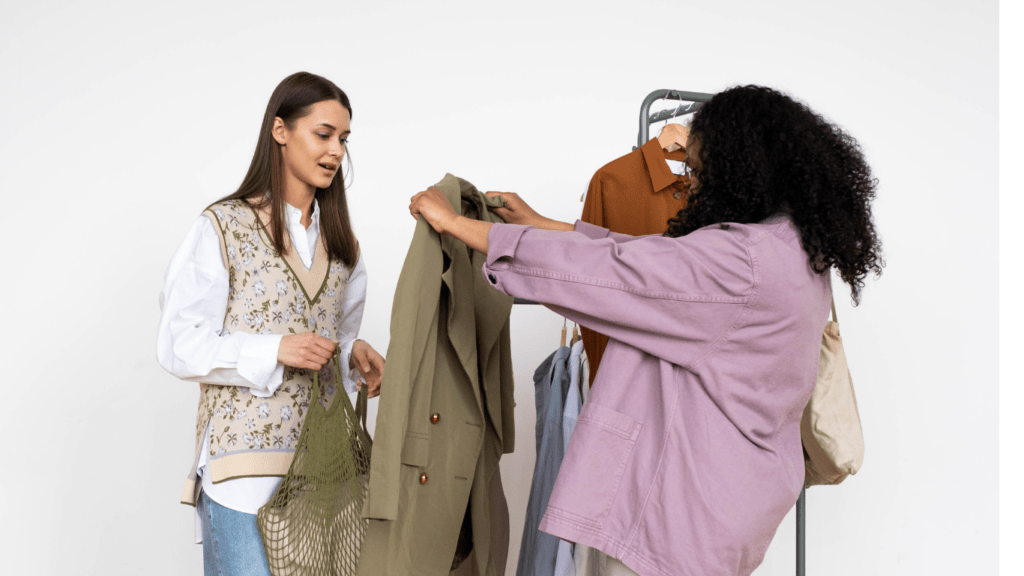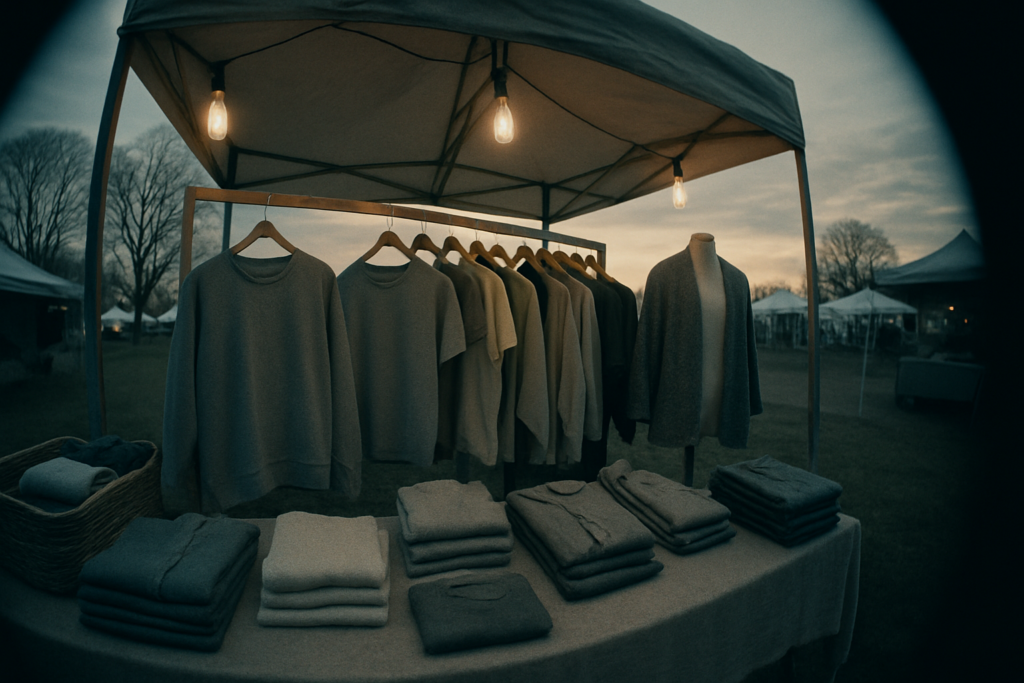Benefits of Hosting a Clothing Swap
Hosting a clothing swap brings numerous advantages. It’s an enjoyable and economical way to refresh your wardrobe while fostering sustainability.
Save Money on Fashion
Swapping clothes with friends lets you update your wardrobe without spending. For instance, friends can exchange items they no longer need, finding new favorites in the process.
Brand-new fashion pieces often cost from $20 to $100, whereas a clothing swap makes it possible to get a similar variety for free. This approach saves significant funds otherwise spent on shopping, and all participants get to showcase fresh styles.
Promote Sustainable Living
Clothing swaps support sustainable living. By reusing items, they reduce waste and the demand for new clothing production. Popular clothing brands produce tons of waste annually, contributing to environmental pollution.
Over 92 million tons of textile waste occupies landfills each year, and hosting swaps mitigates this issue. Items that would have been discarded get a second life, cutting down on waste and decreasing overall consumption.
Participants contribute to a more eco-friendly lifestyle by embracing swaps.
Planning Your Clothing Swap

Effective planning ensures a smooth and enjoyable clothing swap experience for everyone involved.
Choosing the Right Venue
Pick a location with enough space for friends to browse comfortably. My living room worked well since it has ample seating and natural light. Alternatively, consider using a garage or backyard if weather permits.
Ensure there’s enough room to create distinct areas for different types of clothing and accessories.
Setting a Date and Time
Select a date and time that works for most participants. I found weekends best since everyone has free time. Aim for midday sessions, between 11 AM and 2 PM, to provide enough time for people to arrive, browse, and swap.
Use a group chat or poll to find a mutually convenient slot.
Inviting Your Friends
Hosting a clothing swap involves getting your friends excited and prepared. Inviting friends effectively ensures a good turnout and a diverse selection of clothes.
Creating Invitations
Design engaging invitations to capture your friends’ interest. Use digital tools like Canva or Evite to create appealing e-invites. For those who prefer printed options, Adobe Express invitation printing solutions offer customizable templates and high-quality prints that add a personal touch to your event.
Include essential details like date, time, location, and any specific instructions for clothing items.
For example, note if there’s a limit on the number of items per person or if guests should bring accessories. Send invitations at least three weeks in advance, giving everyone ample time to prepare.
Communication and RSVPs
Clear communication ensures participants know what to expect.
- Use a group chat or email thread to share updates and answer questions.
- Remind friends to RSVP by a certain date so you can plan accordingly.
- Ask them to confirm the types of items they intend to bring, ensuring a varied assortment available.
- Regular follow-up messages keep everyone engaged and excited about the event.
Organizing the Event
Effective organization ensures a smooth, enjoyable clothing swap. Each step, from sorting items to setting guidelines, plays a crucial role.
Sorting and Displaying Clothes
I categorize items to streamline the event. Separate clothing into distinct groups such as tops, bottoms, outerwear, and accessories. Set up designated areas for each category using tables, racks, or baskets. Label these sections clearly to avoid confusion.
I ensure ample space for participants to browse. Arrange clothing in a way that’s visually appealing and accessible. Keep similar sizes together where possible, making it easy for friends to find items that fit.
Rules and Guidelines for Swapping
I establish clear rules to maintain order. Set a limit on the number of items each person can bring, ensuring quality over quantity. Communicate that all items should be clean and in good condition.
I use a ticket system for fairness. Give participants a ticket for each item they contribute; they can use these tickets to “purchase” new items. This method maintains a fair exchange and prevents hoarding.
I set a time frame for the swap. Establish starting and ending times to keep the event on schedule. Encourage participants to arrive on time and stay within the allotted period to facilitate an organized swap.
By implementing these steps, I create a structured, enjoyable environment for everyone involved.
During the Event
Once the event starts, keeping things running smoothly is crucial. Various roles and activities help make the clothing swap enjoyable and well-organized.
Roles and Responsibilities
Designating specific roles among friends streamlines the event. I usually assign a few key responsibilities:
- Welcoming Guests: Someone greets attendees, collects their clothing items, and distributes swap tickets if used.
- Organizing Clothing: Friends assist in categorizing and placing items in designated sections, ensuring everything stays neat.
- Monitoring Swap: A volunteer oversees the swapping process, managing any questions or disputes that arise.
- Cleanup Crew: Designate a group to handle post-event cleanup, ensuring the venue is left tidy.
Defining roles ahead of time ensures everyone knows their tasks, which keeps the event flowing seamlessly.
Activities and Entertainment
Adding activities and entertainment keeps guests engaged. Here are some ideas:
- Fashion Show: Showcase swapped items in a light-hearted fashion show. I often encourage everyone to participate and model their new finds.
- DIY Stations: Set up areas where guests can customize or repair clothing, enhancing their swapping experience.
- Music Playlist: Curate a playlist of lively tunes to keep the atmosphere festive and fun.
- Photo Booth: Create a photo booth with fun props where guests can take pictures in their new outfits.
These activities not only add excitement but also provide a memorable experience for everyone involved.
After the Event
Once the clothing swap wraps up, it’s important to address lingering tasks that ensure the day ends smoothly and appreciatively.
Handling Leftover Items
Sorting through the remaining clothing helps clear the space efficiently. Identify pieces suitable for donation and pack them up. Contact local charities or thrift stores to arrange a drop-off.
For damaged items, consider recycling options or textile recycling centers. Keeping a small stash of quality pieces for future swaps could also be beneficial.
Thanking Your Guests
Expressing gratitude boosts the positive vibe post-event. Send personalized thank-you notes or messages to attendees. Highlight memorable moments and acknowledge specific contributions.
Sharing photos taken during the event can remind everyone of the fun they had. Such gestures foster stronger connections and set the stage for future swaps.


 is the visionary founder of Eco Elegance Technique, a platform dedicated to blending sustainability with beauty and fashion. With a background in environmental science and fashion design, Lauranne has spent her career pioneering eco-friendly practices in both industries. Her work has influenced a shift towards ethical sourcing, waste reduction, and the use of organic materials. Passionate about education, she frequently speaks at conferences and works to inspire others to embrace a sustainable lifestyle.
is the visionary founder of Eco Elegance Technique, a platform dedicated to blending sustainability with beauty and fashion. With a background in environmental science and fashion design, Lauranne has spent her career pioneering eco-friendly practices in both industries. Her work has influenced a shift towards ethical sourcing, waste reduction, and the use of organic materials. Passionate about education, she frequently speaks at conferences and works to inspire others to embrace a sustainable lifestyle.
